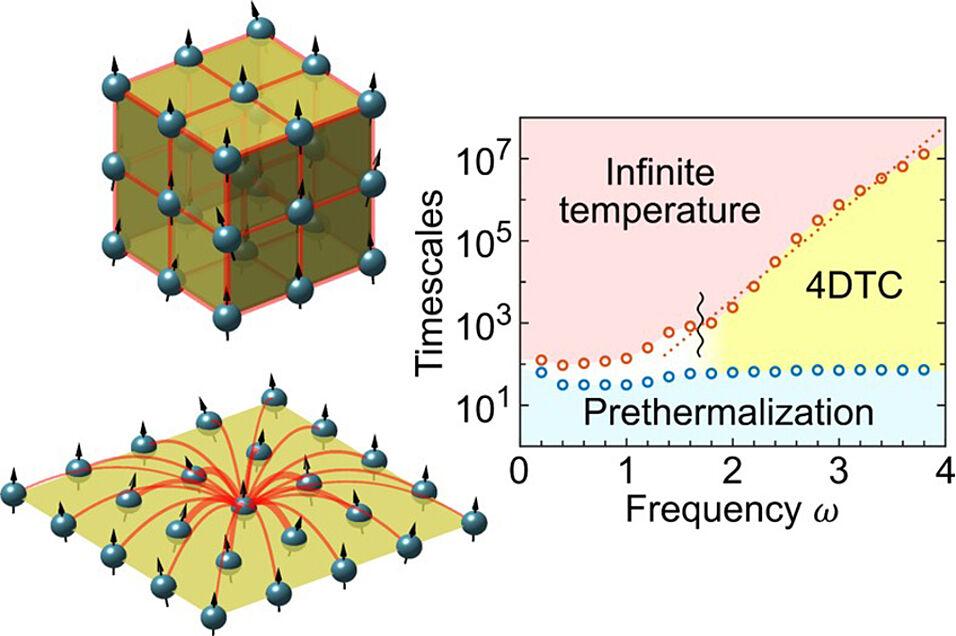DTCs generalize the notion of phase of matter to the non-equilibrium realm. They break the discrete time-translational symmetry of a periodic drive by responding at a subharmonic of that frequency. Among the declinations of time-crystalline phenomena that have been investigated recent years, discrete time-symmetry breaking in prethermal DTCs lasts for a finite but very long time (exponential in drive frequency). Discovered in a quantum-mechanical setting, analysing prethermal DTCs has so far remained challenging to due to the notorious complexity of quantum many-body systems.
In a double publication, the team of physicists from Cambridge, TU Munich, and Nottingham (now at the University of Vienna) show that prethermal DTCs can be captured by a classical theory that has virtually no numerical limitations. With large-scale numerical simulations, the authors provide the up-to-date clearest portrait of these phenomena, e.g. the first instance of a prethermal DTC with short-range interactions in three dimensions and scenarios of prime relevance for experiments.
These two works establish classical Hamiltonian dynamics as an approach to large-scale simulations of prethermal phases of matter, thereby remove the stringent constraints for quantum many-body simulations, and open new avenues in the growing field of non-equilibrium many-body dynamics.
Publication in Physical Review Letters:
Classical prethermal phases of matter:
Pizzi, A., Nunnenkamp, A., and Knolle, J., Physical Review Letters 127, 140602 (2021). DOI:10.1103/PhysRevLett.127.140602

